In the early 1990s a stonemason secretly carved a Xenomorph from the Alien films onto a 700 year old church in Scotland during restoration work.
But it's not out of place. Because Medieval gargoyles were even stranger (and funnier) than this...
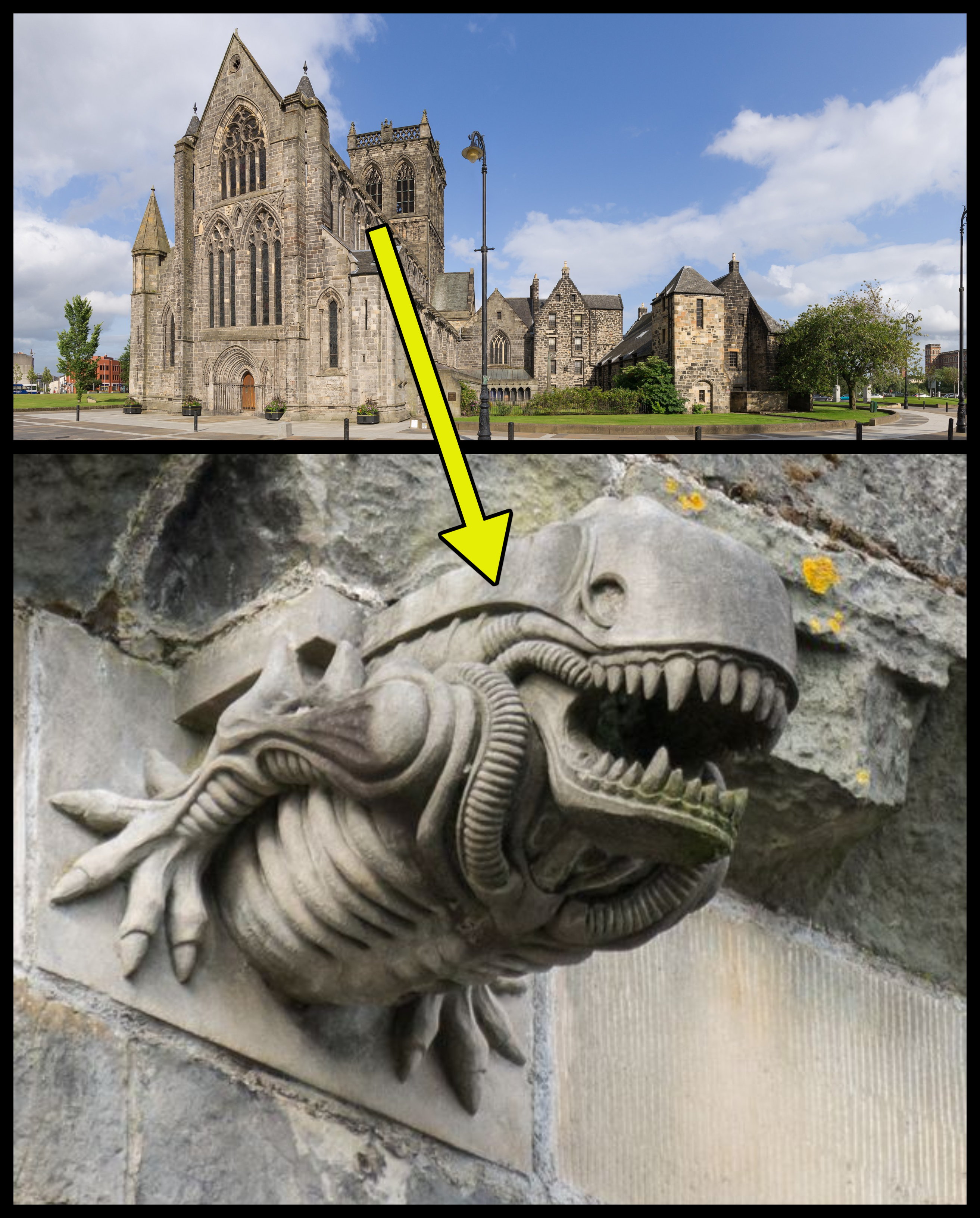
In the early 1990s a stonemason secretly carved a Xenomorph from the Alien films onto a 700 year old church in Scotland during restoration work.
But it's not out of place. Because Medieval gargoyles were even stranger (and funnier) than this...

A similar example is the famous Darth Vader mask on the Washington National Cathedral, added in the 1980s after a competition was held for children to design sculptures for the then-unfinished northwest tower.
Are the Xenomorph and Darth Vader appropriate for places of worship?
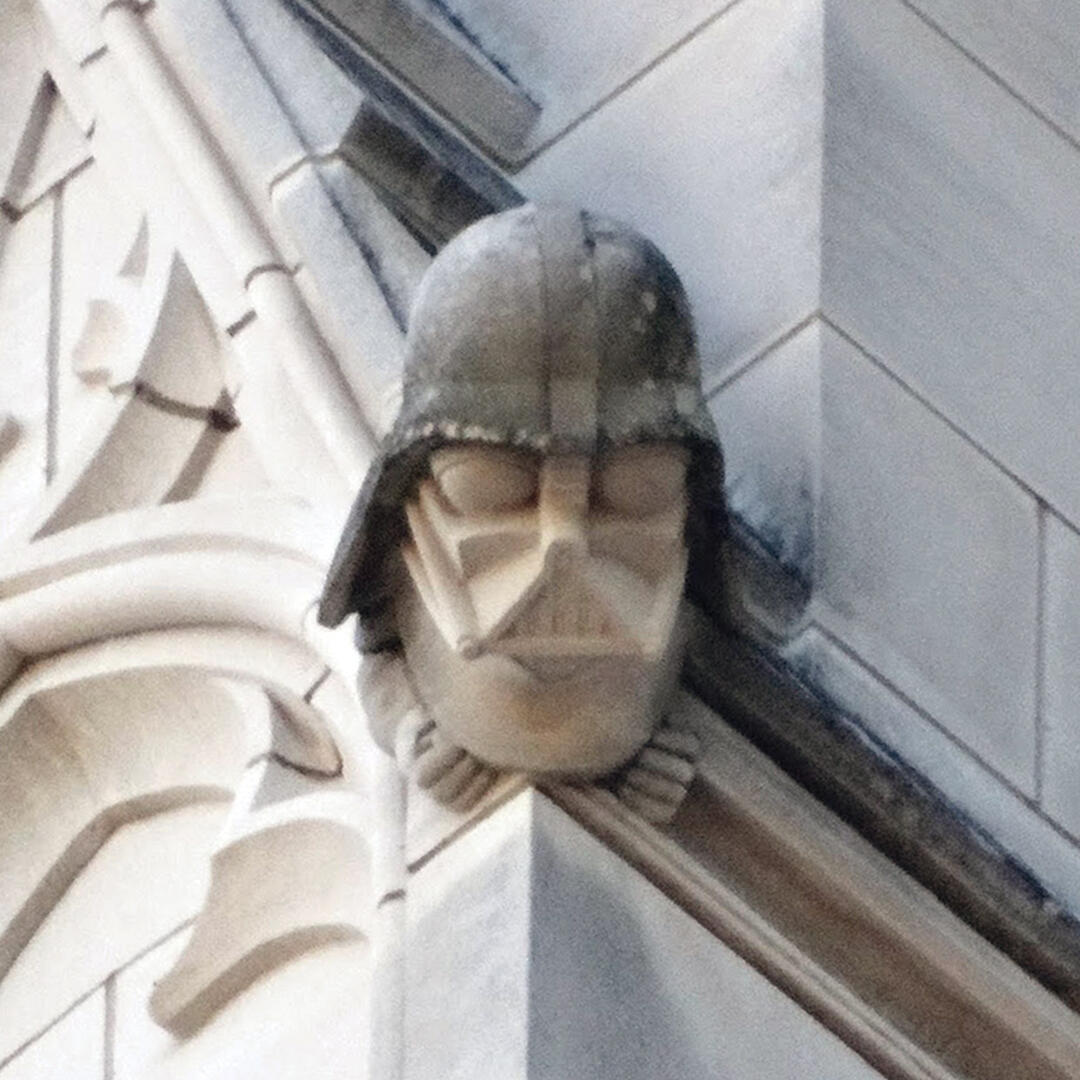
Well, what is a gargoyle? It's a type of grotesque.
And a grotesque is any carving of a monster, creature, or person (as opposed to saints or angels) on the interior or exterior of a church or cathedral.
They're a typical and nearly ubiquitous feature of Gothic architecture.
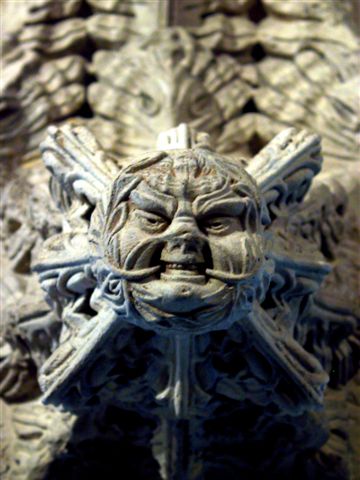

And a gargoyle is simply a water spout in the form of a grotesque, used to direct rainwater away from the walls of the building and protect its mortar and stonework from deterioration.
The spout usually comes out of the mouth of the creature or person.

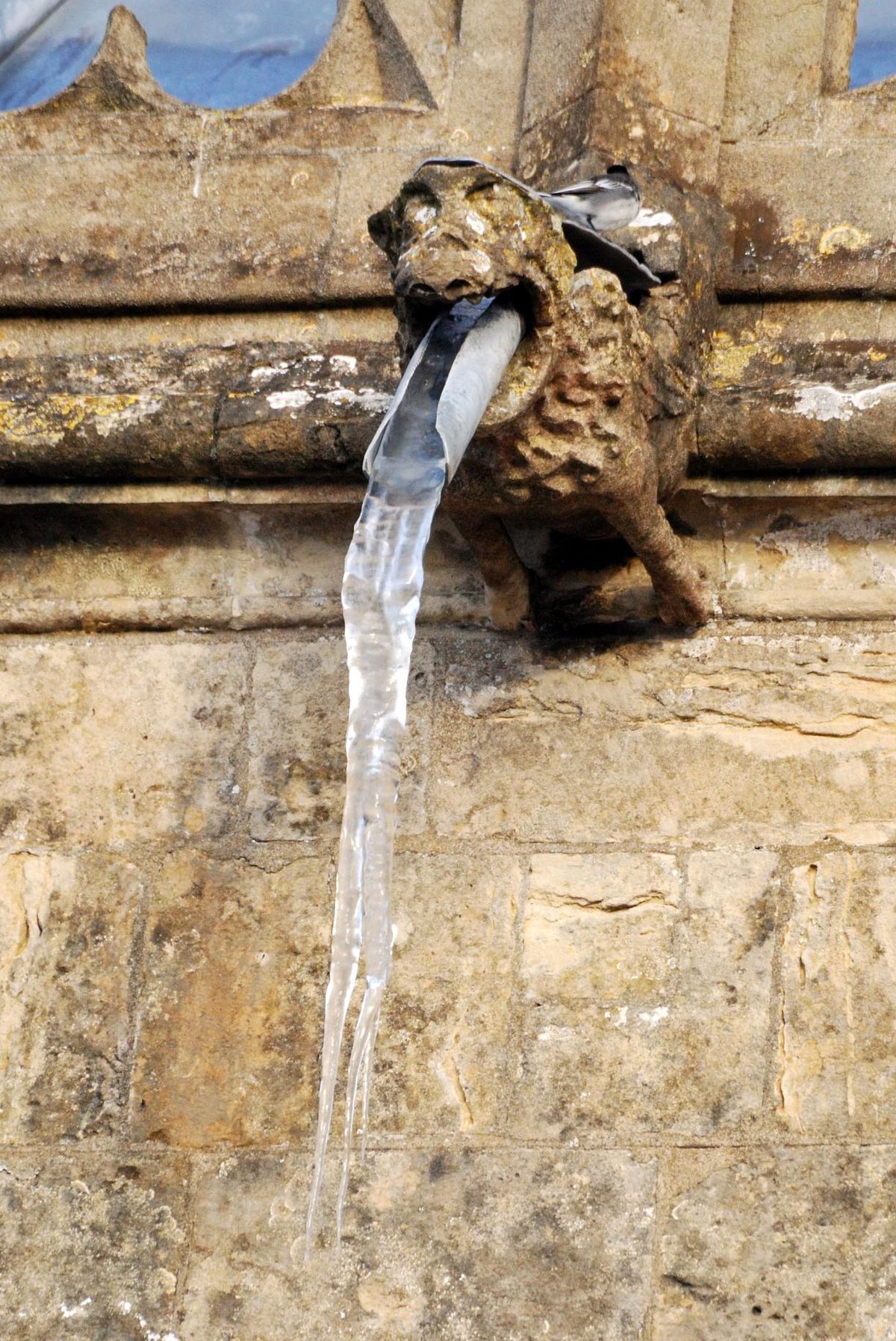
And so the gargoyle is ultimately a functional feature. Rather than with drainpipes this was how they protected cathedrals & churches - constructed at great expense - from rain damage.
Its purpose was entirely practical, hence why some of them were rather simpler in design.

So how did these wholly functional water spouts become decorative objects of such wildly imaginative power?
Well, the answer tells us something important about Gothic architecture and about the Medieval mind more generally.


The first is an urge and willingness to decorate anything and everything.
In a Gothic cathedral everything is ornamented, from the windows to the benches to the doors, all covered in foliage, abstract patterns, humans, beasts, and scenes from the Bible.

It makes sense, then, that this decorative urge was also applied to the water spouts necessary for the protection of a cathedral's walls.
What now would be purely functional was, for Medieval stonemasons, a chance to create something interesting, beautiful, or funny.

But these gargoyles weren't only decorative.
They also had immense symbolic and religious power. We've got to remember that literacy rates were incredibly low in the Middle Ages, and there was no internet. Perhaps these were, in some sense, a form of entertainment?

But it's more than that. Medieval literature was filled with allegory, and so these gargoyles play into the deeply symbolic Medieval worldview.
Perhaps warding off evil spirits, perhaps transmuting the physical reality of the church into a realm of the divine and fantastical.

And Medieval art more generally, shaped by the ravages of the Black Death, was filled with visions of a uniquely terrifying, ridiculous, and phantasmagorical nature.
As in the bafflingly bizarre works of Hieronymus Bosch or Pieter Bruegel the Elder:

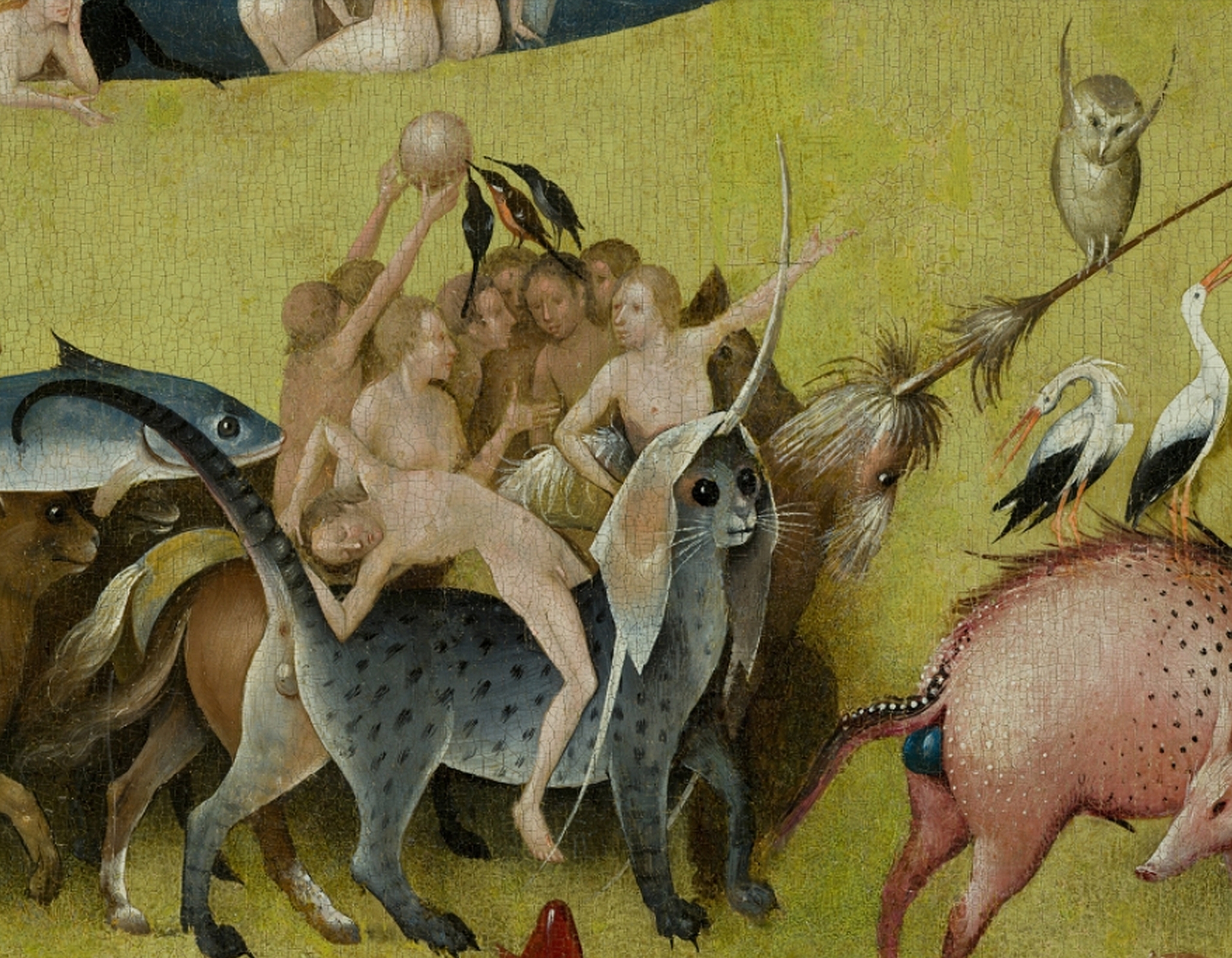

But it wasn't all serious. Gargoyles and grotesques were also an opportunity for humour, some of it subtle and some purely scatalogical.
The masons had a chance, working high up on a tower and far from view, to make filthy jokes, mock authority, and caricature the clergy.


Which brings us to something else important about these strange statues (and the great cathedrals generally): their creators.
Their names have largely been lost to time, but here we see the legacy of a long-gone class of itinerant, pre-Industrial, skilled labourers and masons.




Gargoyles seemed to offer these anonymous stonemasons a chance to let their imaginations run free, whether indulging in the macabre or the apocalyptic, the bawdy or the satirical.
A type of creative freedom harder to come by in the world of modern construction.



The influential 19th century critic John Ruskin wrote that "the tendency to delight in fantastic and ludicrous, as well as in sublime, images, is a universal instinct of the Gothic imagination."
He was right; those stonemasons channelled the imaginative force of an epoch.


And so gargoyles represent, perhaps, the epitome of Gothic.
What could have been purely functional was turned into something not only wildly decorative but supremely symbolic; usually terrifying, often witty, sometimes ribald, and always a frenzy of individual creative energy.

There's plenty of decoration in classical architecture, but none so wild as gargoyles, for classical architecture is defined by a clear and rational system of proportions and rules.
Gothic architecture had no such qualms about "irrationality"; here the imagination ran free.

William Morris, concerned by the Industrial Revolution's growing oppression of labourers, said this about Gothic art.
It's hard not to see creative joy and autonomy in Medieval gargoyles; such was the positive working environment Morris wanted to recreate in Victorian Britain.

During the Gothic Revival in the 19th century, when old Medieval buildings were being restored and new Neo-Gothic buildings constructed, the fashion for gargoyles returned.
Old ones were replaced and stonemasons created new ones in the same darkly humorous, fantastical spirit.

And so when that stonemason carved a Xenomorph on the walls of Paisley Abbey in the 1990s it was something of which Medieval predecessors six hundred years ago would have approved.
And, alongside gargoyles from across the centuries, it looks very much at home.

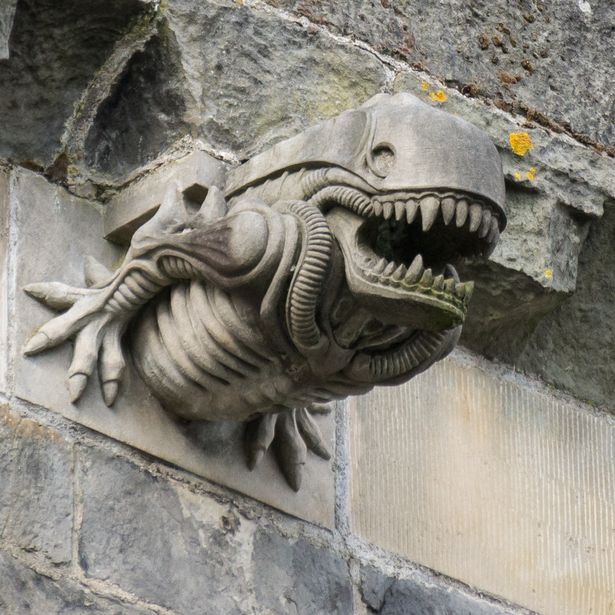


The Gothic cathedral is not only a colossal monument of stone but a deeply symbolic and fantastical place filled with story and allegory, its steeples crowded with devils and angels, its buttresses topped by caricatures and jokes.
The gargoyle is a view into the Medieval mind.
